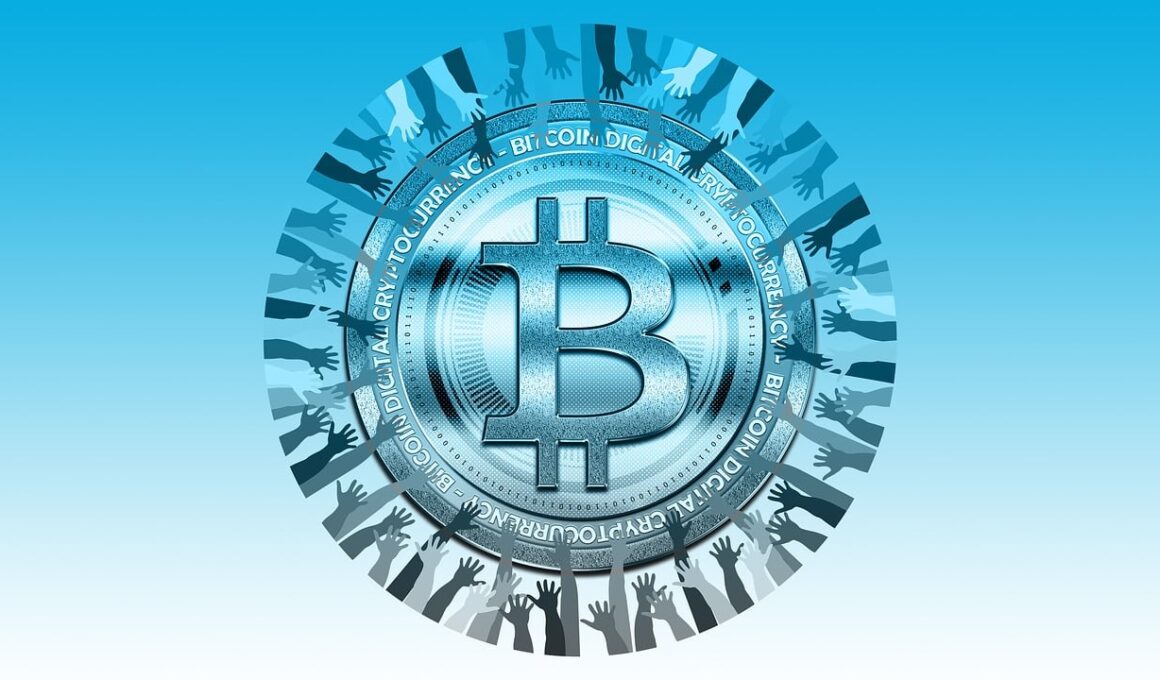Cross-border Payments and the Rise of Decentralized Finance (DeFi)
Understanding cross-border payments is essential in today’s global economy. Traditional banking systems and payment networks often hinder seamless transactions due to high fees, long processing times, and stringent regulations. This creates challenges for businesses and individuals looking to send money internationally. However, the rise of decentralized finance, or DeFi, is transforming the landscape. Leveraging blockchain technology, DeFi platforms offer peer-to-peer transactions, allowing users to send and receive funds without intermediaries. This shift empowers users and fosters financial inclusion. Furthermore, DeFi reduces transaction costs and enhances speed, making cross-border payments more efficient. Users can transact within minutes, regardless of geographical location. Additionally, innovations such as stablecoins stabilize value fluctuations, facilitating reliable exchanges. The interoperability of various DeFi platforms amplifies this ease of transfer, bridging national currencies efficiently. The financial landscape is thus evolving rapidly, presenting immense opportunities for businesses and individuals worldwide. As users become increasingly conscious of costs, security, and efficiency, DeFi continues to gain traction. Therefore, understanding these developments will be fundamental for stakeholders looking to thrive in this new environment.
The potential of DeFi extends beyond just lower costs. Traditional finance systems are often criticized for being exclusive. In contrast, DeFi democratizes access to financial services. For instance, individuals without a banking account can enter the global financial system. This inclusion invites a broader user base, fostering economic growth. Also, DeFi protocols enable innovations like liquidity pools, which allow users to provide assets and earn returns. These features empower users to take control of their finances more holistically. Furthermore, DeFi’s composability traces the connections between different services, creating extensive applications. Through automated smart contracts, these digital agreements ensure transparency and security in transactions. Also, extensive blockchain networks eliminate the need for trust in traditional intermediaries. As a result, users can share valuable information while retaining control of their data. Regulatory landscapes for DeFi vary across regions, prompting ongoing discussions on compliance. Policymakers are keen to engage with DeFi to harness its potential while safeguarding users. However, the need for clear regulatory frameworks remains an ongoing topic in the industry. Thus, balancing innovation against regulatory requirements will be crucial as DeFi continues to expand.
Benefits of DeFi in Cross-border Payments
The benefits of integrating DeFi in cross-border payments are manifold. First, the elimination of intermediaries reduces transaction delays. Payments traditionally take days or even weeks due to banking protocols. DeFi solutions, however, enable instant transactions, leading to enhanced customer satisfaction. Additionally, the reduced costs of transactions are considerable. Traditional systems charge high service fees, particularly for foreign currency exchanges. DeFi mitigates these fees, allowing users to retain more of their funds. Importantly, decentralized payment channels enhance security, lessening the risks of fraud and hacking. Companies can confidently transact, knowing their assets are protected via blockchain’s immutability. Moreover, DeFi platforms provide enhanced transparency. All transactions are documented in public ledgers, cultivating trust among users. This visibility allows users to audit transactions and verify the reliability of services. The global nature of DeFi fosters inclusive economic growth, inviting previously unbanked populations into the fold. Furthermore, DeFi continually evolves, with new projects emerging regularly to address user needs dynamically. As the market adapts, businesses must stay abreast of trends and innovations to leverage DeFi effectively for their cross-border payments.
The mainstream adoption of DeFi in cross-border payments faces challenges, while the opportunities are vast. Regulatory compliance remains a significant hurdle, impacting businesses wishing to enter this space. Understanding the evolving compliance environment is necessary for success in the DeFi landscape. Moreover, liquidity concerns may arise, particularly for new platforms. Minimizing risks associated with liquidity is essential for ensuring smooth transactions. Additionally, issues related to scalability could hinder performance during peak usage times. Expanding infrastructure to support an increasing number of users remains a priority. User education also plays a vital role in successful integration. Many users are still unaware of DeFi’s benefits and potential risks. Developing comprehensive educational resources or community outreach programs can assist in addressing these gaps. Furthermore, ensuring a user-friendly interface is crucial for wider acceptance, especially among non-technical users. As DeFi platforms aggregate more users, fostering community engagement becomes indispensable for success. Therefore, understanding the balance between innovation, user experience, and regulatory compliance is critical for businesses aiming to thrive in the evolving landscape of cross-border payments through DeFi.
The Future of Cross-border Payments in a DeFi World
The future of cross-border payments in a DeFi world looks promising. As technology evolves, more users will seek innovative financial solutions like DeFi. This trend signifies a shift in how transactions are processed globally. Financial institutions are beginning to explore partnerships with DeFi platforms, recognizing potential advantages. This collaboration can drive the development of augmented payment systems that leverage the strengths of both centralized and decentralized finance. Additionally, the advent of central bank digital currencies (CBDCs) poses interesting implications for cross-border payments. CBDCs may work alongside DeFi solutions to streamline transactions while maintaining regulatory oversight. Furthermore, as interoperability between various blockchain networks improves, users will benefit from seamless access to various DeFi applications. Users can interact without friction, creating an expansive financial ecosystem. The transformation will empower individuals to take charge of their finances actively. Ensuring broad accessibility to DeFi solutions will thus be imperative to foster financial inclusion. For developers, creating innovative applications catering to diverse user needs must remain a priority. In essence, the future is ripe with opportunities for cross-border payments evolving through the DeFi revolution.
DeFi has the potential to reshape the entire financial sector. As more users gravitate towards decentralized solutions, traditional financial institutions must adapt or risk obsolescence. Banks and payment providers will likely embrace DeFi elements to remain competitive. Innovations such as automated compliance checks could help merge compliance requirements with decentralized functionalities. Fintech companies can particularly benefit from leveraging DeFi technologies to improve their offerings. This collaboration will likely foster innovative financial products, aligning with the demands of modern users. As DeFi grows, potential risks persist, requiring a proactive approach in addressing security vulnerabilities. The industry must invest in advanced security measures to establish user confidence. Users must have the assurance that their funds are safe while using decentralized platforms. Additionally, regulatory bodies must adopt proactive frameworks to govern DeFi environments effectively. This partnership between innovators and regulators could yield a balanced approach, promoting growth while protecting users. Finally, as financial ecosystems continue to integrate, stakeholders will witness a substantive transformation in cross-border payments supported by DeFi advancements. This change heralds a future where transactions can be effortless, economical, and inclusive.
Conclusion
In conclusion, the evolution of cross-border payments is undeniably linked to the rise of decentralized finance. As DeFi continues to gain ground, its advantages such as reduced costs, increased speed, and heightened transparency will drive higher adoption rates. The integration of DeFi solutions presents extensive opportunities for businesses and individuals alike, fostering financial inclusion on a global scale. It is crucial for stakeholders to stay informed of industry trends, technological advancements, and regulatory developments in order to thrive within this dynamic ecosystem. The challenges posed by integrating DeFi, particularly compliance and user education, should not deter innovation. Instead, they emphasize the need for collaborative solutions that bridge the gap between traditional finance and decentralization. As we move forward, the landscape of payments will likely become easier, faster, and more cost-effective, ultimately reshaping how value is transferred worldwide. Thus, for cross-border payments and the DeFi landscape, forging partnerships, embracing technology, and prioritizing security are essential. As the future unfolds, the possibilities appear endless, ushering in a new era of financial transactions powered by DeFi that enhances user experience and boosts economic growth.
Ultimately, embracing DeFi in cross-border payments is a call to action for businesses in various sectors, compelling them to innovate. Understanding users’ needs and aligning solutions accordingly remains central to achieving success. Building trust with diverse stakeholders, including users and regulators, will be pivotal in cultivating a sustainable financial ecosystem. Stakeholders must actively engage and participate in ongoing conversations surrounding DeFi to ensure its responsible development. As this space matures, user education will play an increasingly crucial role, facilitating wider adoption among different demographics. Clear communication about benefits and risks associated with DeFi will help demystify this financial revolution. The ultimate goal is to enable seamless cross-border transactions to benefit individuals and businesses globally. Market players need to remain nimble and responsive to adapt to evolving conditions. As the industry embraces change, constructive collaboration among various stakeholders is essential to maximize DeFi’s potential. The future of finance is being written today, and proactive engagement will shape the narrative to be more inclusive, efficient, and straightforward. Therefore, the journey toward integrating DeFi into cross-border payments promises an exhilarating path ahead.


